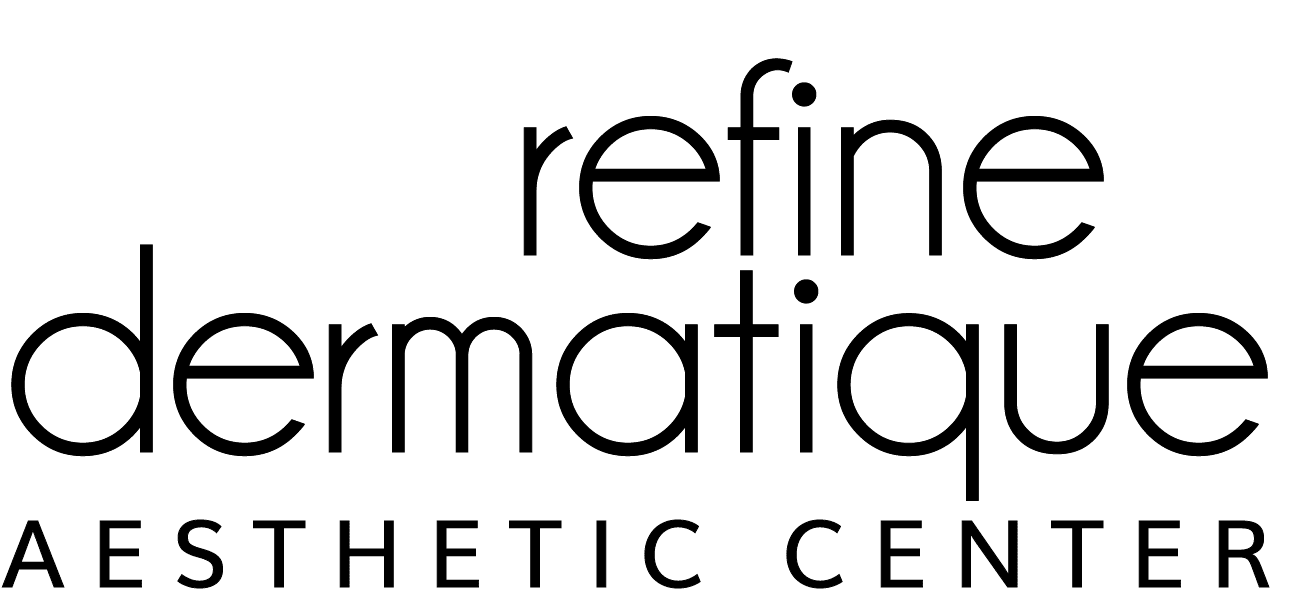[et_pb_section bb_built=”1″][et_pb_row][et_pb_column type=”1_4″][et_pb_image _builder_version=”3.20.2″ src=”https://shop.refinedermatique.com/wp-content/uploads/2019/04/volume-loss-side-by.jpg” /][/et_pb_column][et_pb_column type=”3_4″][et_pb_text _builder_version=”3.20.2″]
Look at an array of youthful faces, and they’re bound to have one thing in common: volume. This look of fullness results from skin having the necessary structural support to look smooth and supple, and to reflect light. And while the cause of volume loss may be attributed to many factors, modern, integrative approaches to volume restoration address both the underlying cause and visible effects.
Volume loss is one of the primary signs of aging. As facial volume naturally diminishes, skin is no longer stretched as tightly over the surface, creating areas marked by hollowing, shadows and folds. Changes in the anatomy of the face caused by shifts in bone as well as bone loss causes the skin and soft tissue to drape differently which affects multiple areas of the face. The skin itself also suffers from the simultaneous breakdown of existing collagen and the decreased capacity to generate new collagen, causing increased laxity and sagging.
One of the first facial areas to be affected, is the midface, which consists of the cheekbone, and the area just beneath the cheekbone, where hollowing occurs. As we lose cheek volume, tissue itself slides down, causing the cheeks to sink and often worsening the lines around the mouth which often look like parenthesis.
In addition, women in particular can lose up to 40 percent of their jawbone. The eye socket also recedes, causing the eye area to appear hollow and sunken. The bridge of the nose may lose bone and start to droop slightly with age. And one can’t overlook the temples, which start to create an overall look of gauntness as they deflate, causing a hollowness that affects surrounding areas like the eyebrows.
Fat, too, plays an important role in giving the face youthful-looking roundness. Therefore, it stands to reason that lifestyle changes, such as illness, dieting, increased exercise or other causes of extreme weight loss will start to affect facial fullness, typically after a weight loss of 10 pounds or more.
Whatever the cause, comprehensive treatment for volume loss focuses on the end goal of restoration, not augmentation. What does that mean? When restoring volume, we want you to look like yourself, not someone who has an overinflated face – we’ve all seen them and it is not attractive. In fact, we sometimes begin an injectable treatment plan by reviewing a patient’s old photographs to get a better idea of how their facial contours have changed over time.
Volume restoration options fall under two categories: traditional fillers, which literally “fill” shallow areas and folds, known by trade names such as Restylane, Radiesse, and Juvederm. The second category is known as biostimulators, which rebuild the underlying structure of the skin by stimulating the production of collagen, known by the trade name Sculptra.
For those patients with, well, patience, Sculptra is one of the biostimulator fillers available that offer a gradual way to restore fullness to hollow areas of the face. Rather than fill, they stimulate collagen production deep within the dermis to reinforce the skin’s support structure. It can also thicken the skin up to a centimeter, providing a visible boost to surrounding skin. Results, though not immediate, can last for over two years with a series of treatments. We have seen excellent results with Sculptra. Often times Sculptra can be combined with traditional fillers for an optimal restoration of volume as well as delivering instant gratification. Men have also found fillers such as Sculptra to be a more natural approach to restoring their facial volume and it does an excellent job of squaring off the jawline again.
Though no one is exempt from aging, we all have the power to significantly slow the process. By addressing some of the primary underlying causes of aging skin such as sun exposure, environmental factors as well as lifestyle choices we can slow the aging process of the skin. In addition taking proactive steps toward restoring the volume and fullness or our youth, we can turn back the clock on how—and when—we age.
Click Here to Watch a Time Lapse of an Aging Face
[/et_pb_text][/et_pb_column][/et_pb_row][/et_pb_section]
